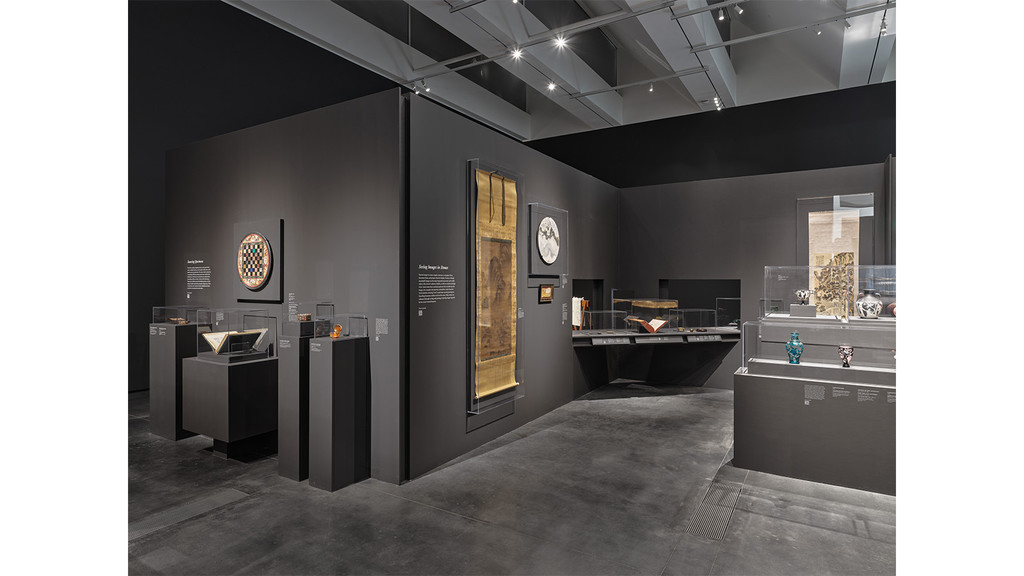
Claus Benjamin Freyinger and Andrew Holder (both MArch '05) design LACMA exhibition "Eternal Medium," on view through February 11
Jan 12, 2024
On view through February 11, Los Angeles County Museum of Art (LACMA) exhibition "Eternal Medium: Seeing the World in Stone" brings together diverse works that utilize the natural features of striking stones, and showcasing the material’s conducive subjects, geographic origins, and physical properties, as well as the technical virtuosity demanded by such a challenging material. AUD lecturer Claus Benjamin Freyinger (MArch ‘05) and Andrew Holder (MArch '05)–aka, The LADG–designed the exhibition, collaborating with Rosie Mills (The Rosalinde and Arthur Gilbert Foundation Associate Curator, Decorative Arts and Design) and others. The show is sited in the museum's Renzo Piano-designed Resnick Pavilion.
Reflecting on the show’s run, Freyinger offers some thoughts on the show’s subject–stone as material–as well as the creative negotiation of designing an exhibition. Visit "Eternal Medium" at LACMA through February 11, 2024; 5905 Wilshire Blvd., Los Angeles.
Congratulations on designing this show. What are some of the first things you consider as an architect when designing an exhibition or curatorial space?
My mind first goes to what is the overarching agenda here: not necessarily what is being delivered as part of the RFP package from LACMA, rather what is the implied agenda—what are we trying to solve or to do here. In this case, the agenda is twofold. It’s a cultural agenda paired with a conceptual agenda that sets up a specific technical problem to solve.
Starting with the technical, we are trying to make relationships between the objects on display that are not just temporal or not simply linear. They are complex, akin to reading continents on opposite sides of the globe, on a map from a single vantage. That is, to make direct associations between, say, Italy and China, it becomes necessary to map the globe, accepting the tears and distortions that go along with this not just as consequential, but as specific opportunities to make design.
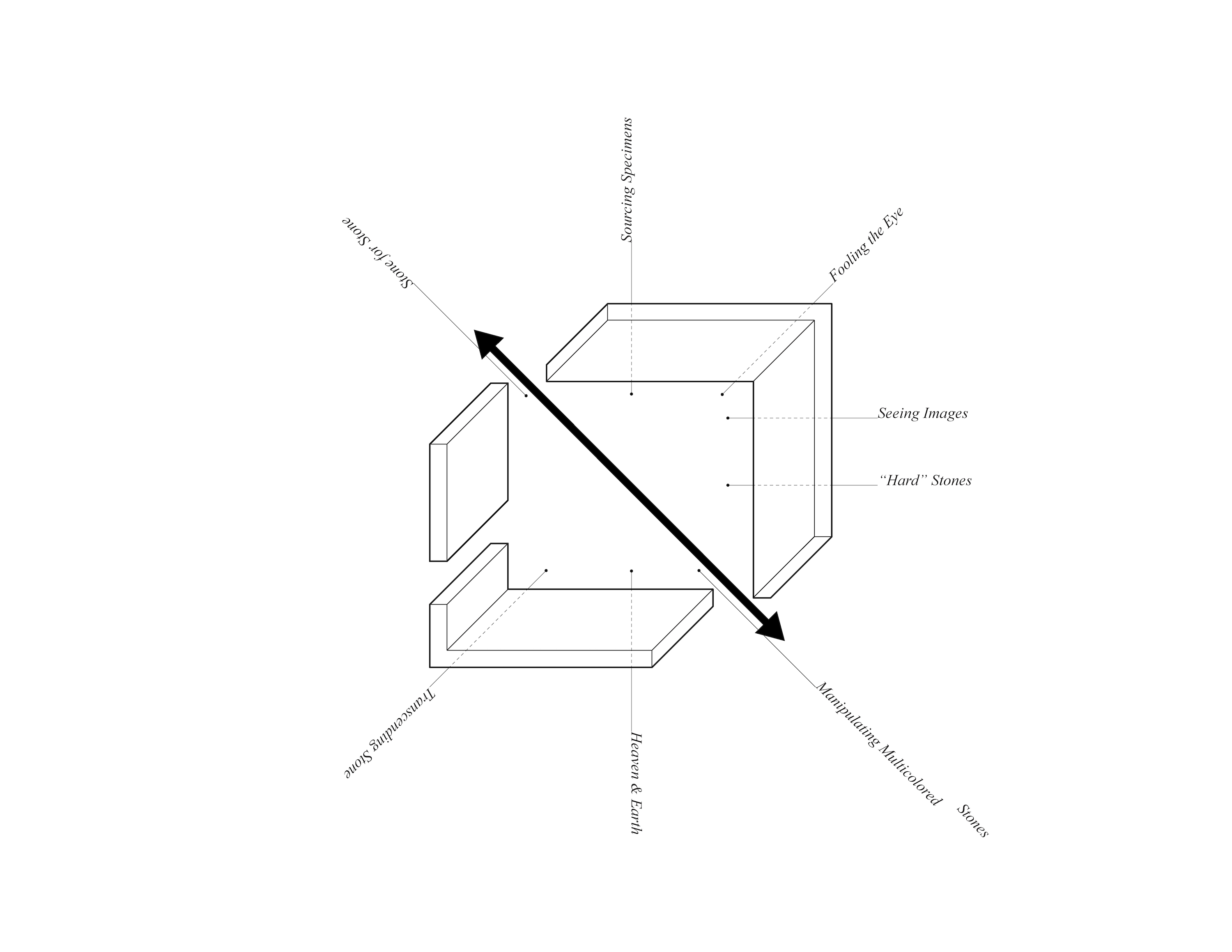
So if, in the context of this exhibition, our world is flat, then objects are approachable, moreover in a non-linear dialogue with one another. As Rosie so wonderfully put it, the exhibition is democratic. It is approachable from multiple vantages, perspectives, and points of life experience inside and outside the art world. It is flat in so far as the objects are approachable at face value, and it is democratic in the sense that everyone understands the end even at the beginning. That is the cultural agenda.
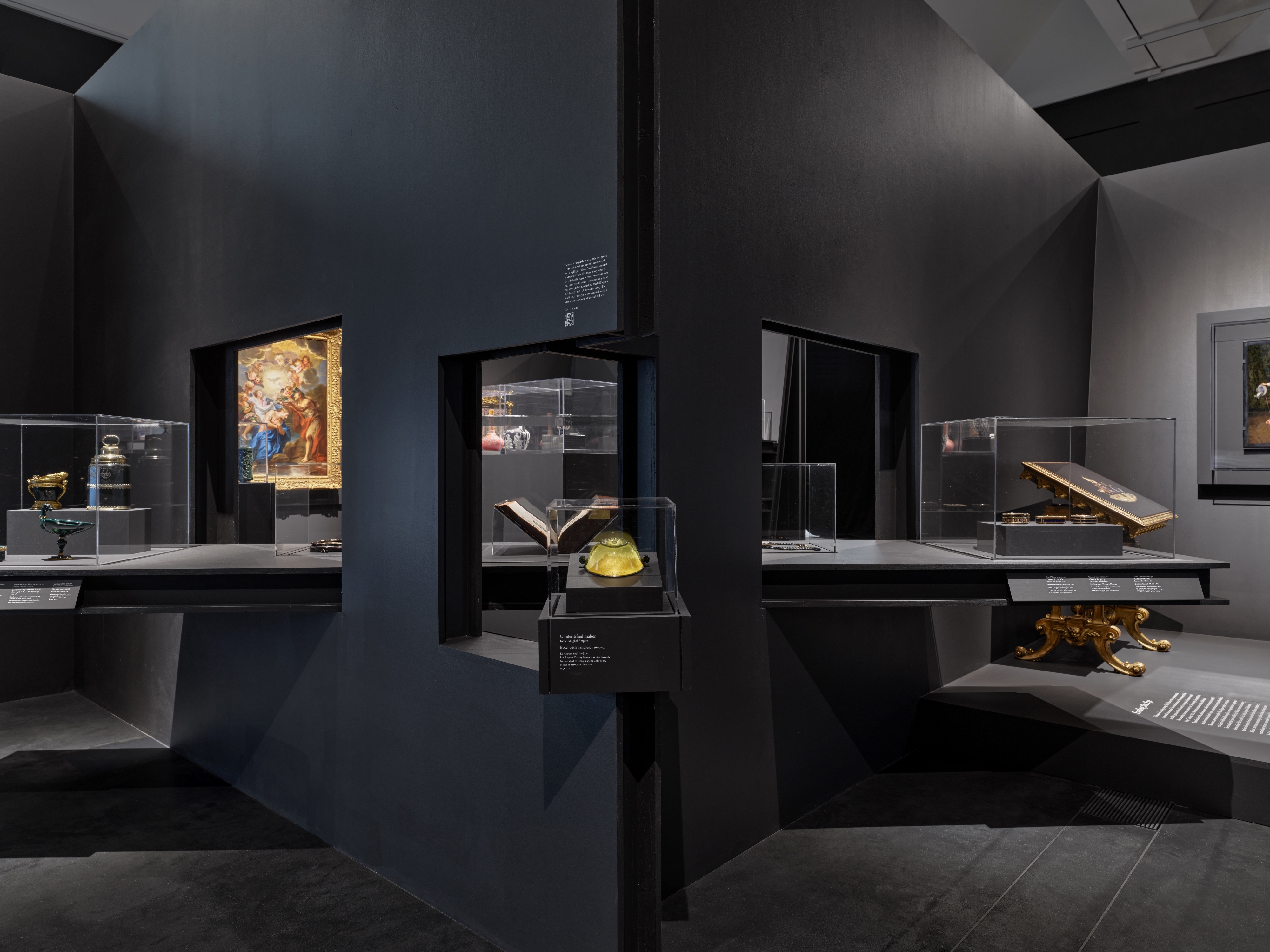
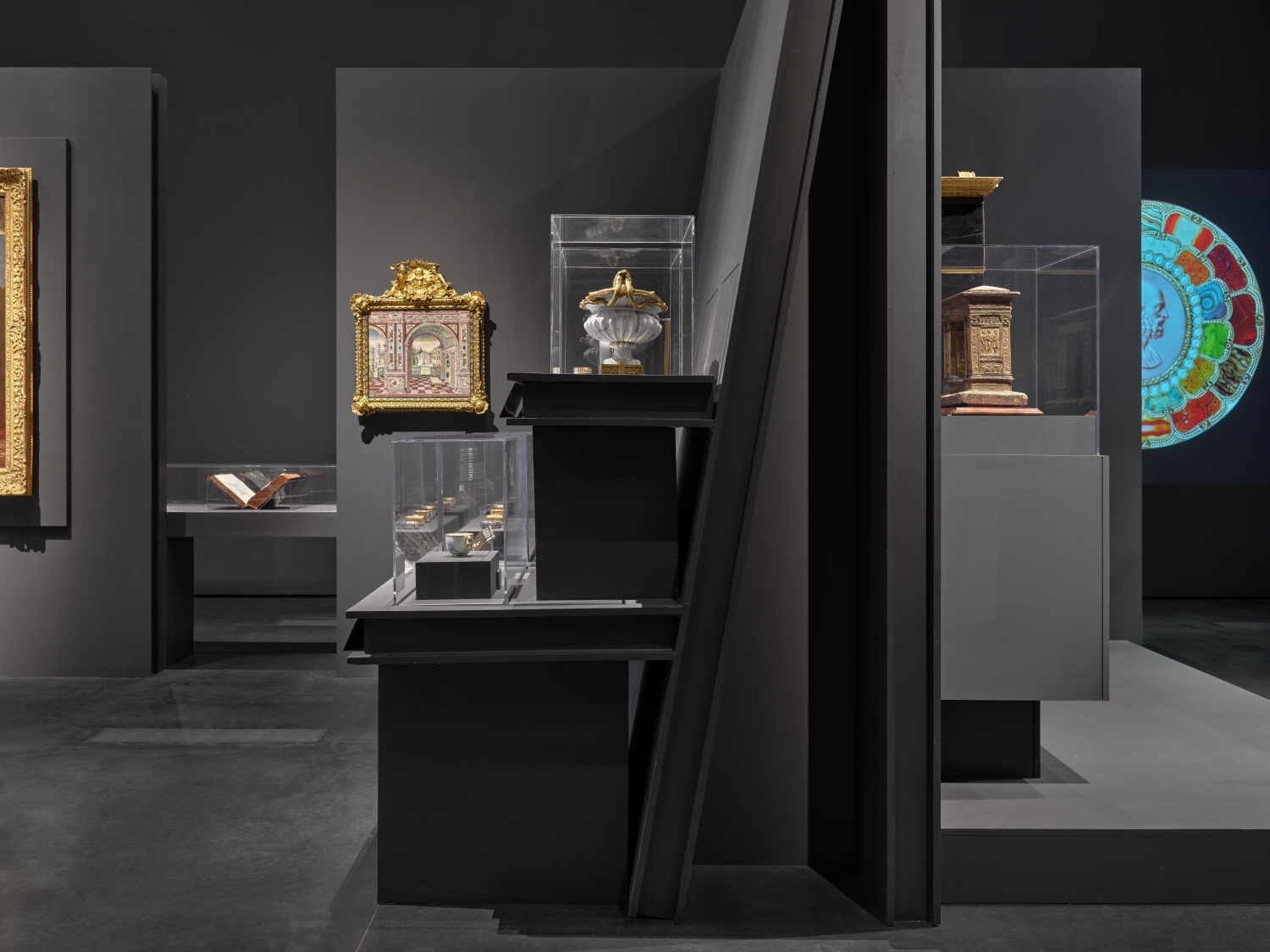
What interested you in designing this show?
Of course we have lots of ideas and research, and that work needs a physical testing ground or a way to make its way into the world, but our core interest was actually simpler: I’ve always thought of LACMA as occupying a clear position at the epicenter of arts culture in Los Angeles, so as founder and co-principal of an architecture firm which I see as closely tied to the culture of this city, I’m honored to be asked to participate.
What were some of the broader concepts or themes in the show that most influenced your exhibition design?
First, the mimetic properties of hardstone as a medium make representational forms simultaneously familiar and strange. Second, stone is a consistent medium, but one that over centuries has produced a dazzling diversity of artifacts across radically different scales and uses. This sets up a complex viewing relationship, in which an object is not just encountered by a subject. Rather, every element of the show is a subject: the act of viewing becomes part of the exhibition content.
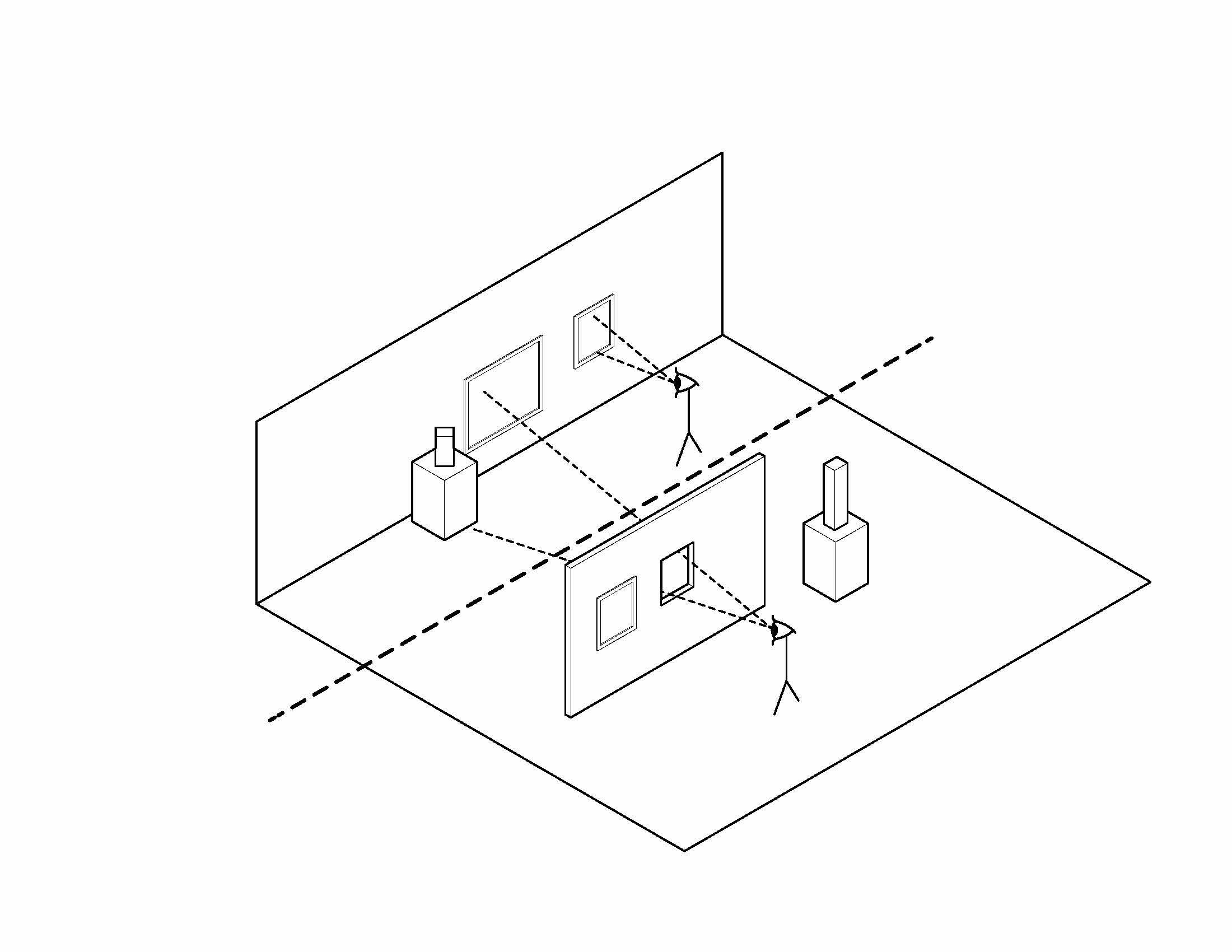
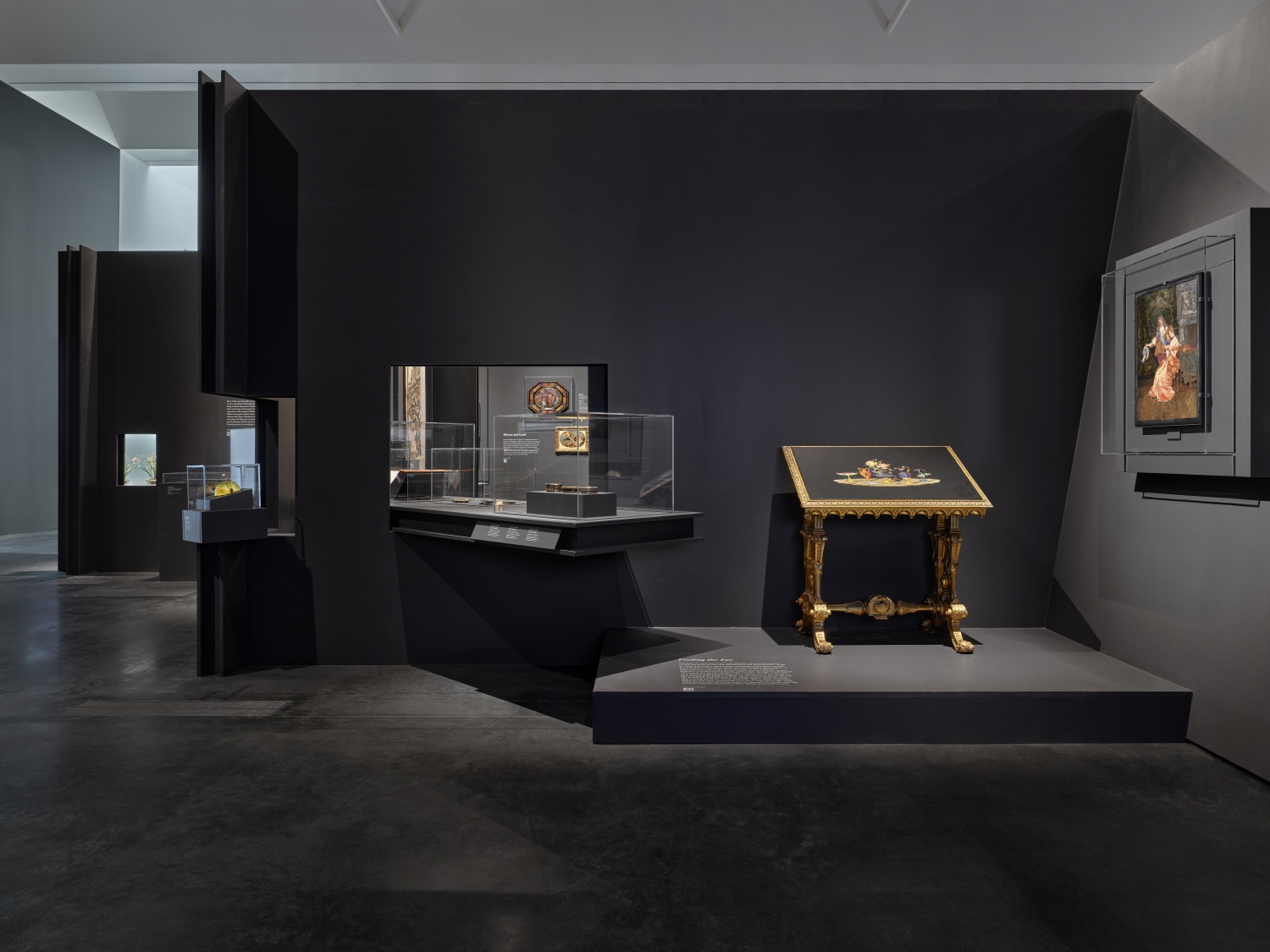
The works on view illustrate the careful shaping and manipulation of a form–a very durable one–turning it into another experience. As an architect, you work with (and sometimes against) a whole range of materials–and a whole range of stone. Did the show influence your thoughts on stone, or materiality?
Absolutely, especially the idea that a medium such as stone has the capacity to preempt a representational outcome. I’m fascinated by the idea that this might translate into architecture.
When designing an exhibition, the architect is often designing within another design, and designing AROUND or FOR other forms of design. What was it like to work within a Renzo Piano-designed space, and at an institution like LACMA?
We were very excited to design something for a space as iconic as Renzo Piano’s Resnick Pavilion. We were equally excited to subvert the intentions of the architect a bit. In this case, we ignored the existing walls intended for hanging objects, a.k.a. the White Cube, and produced the antithesis by making our own tectonics and actually building more walls in the gallery. We’re working on a rather large model at The LADG right now which aims to describe this in physical form—more to follow on that.
Related Faculty |
Benjamin Freyinger |
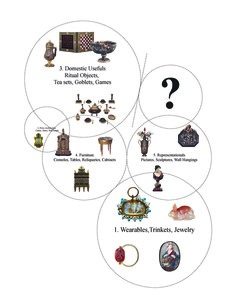
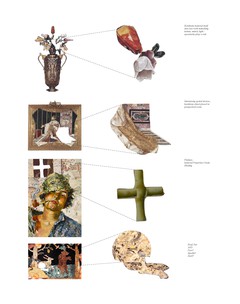
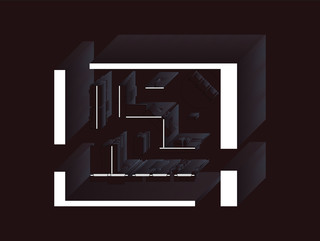
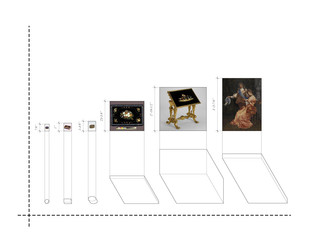
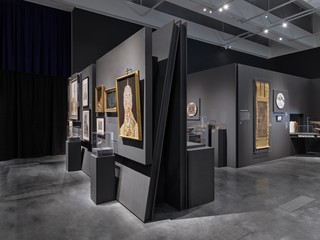
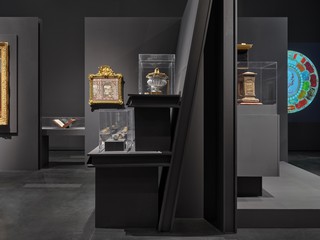
- Conceptual agenda diagram, image courtesy The LADG
- Mimetics diagram, image courtesy The LADG
- Shadow plan, image courtesy The LADG
- Range of artifacts, image courtesy The LADG
- Photo of LACMA's "Eternal Medium," courtesy The LADG
- Photo of LACMA's "Eternal Medium," courtesy The LADG